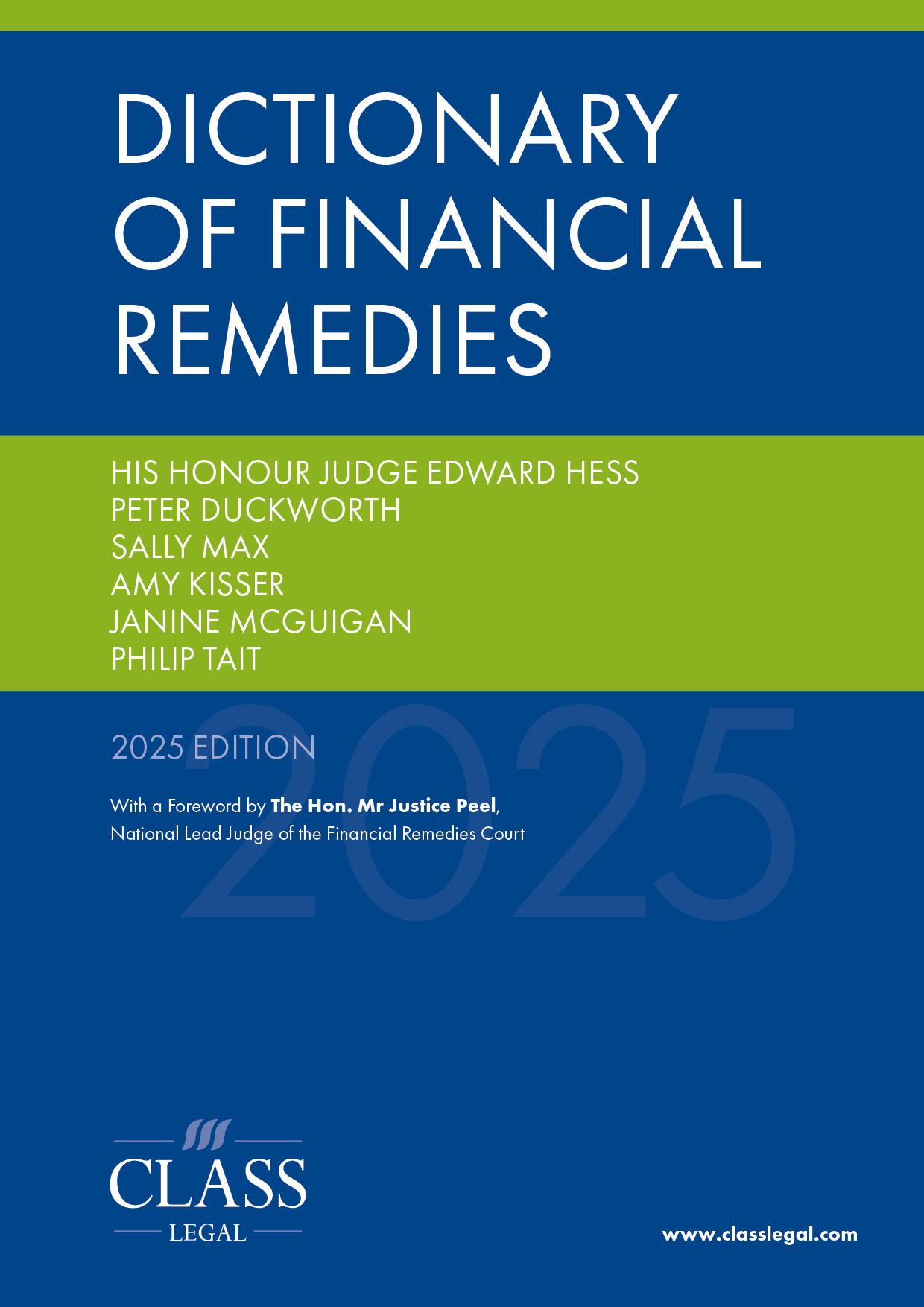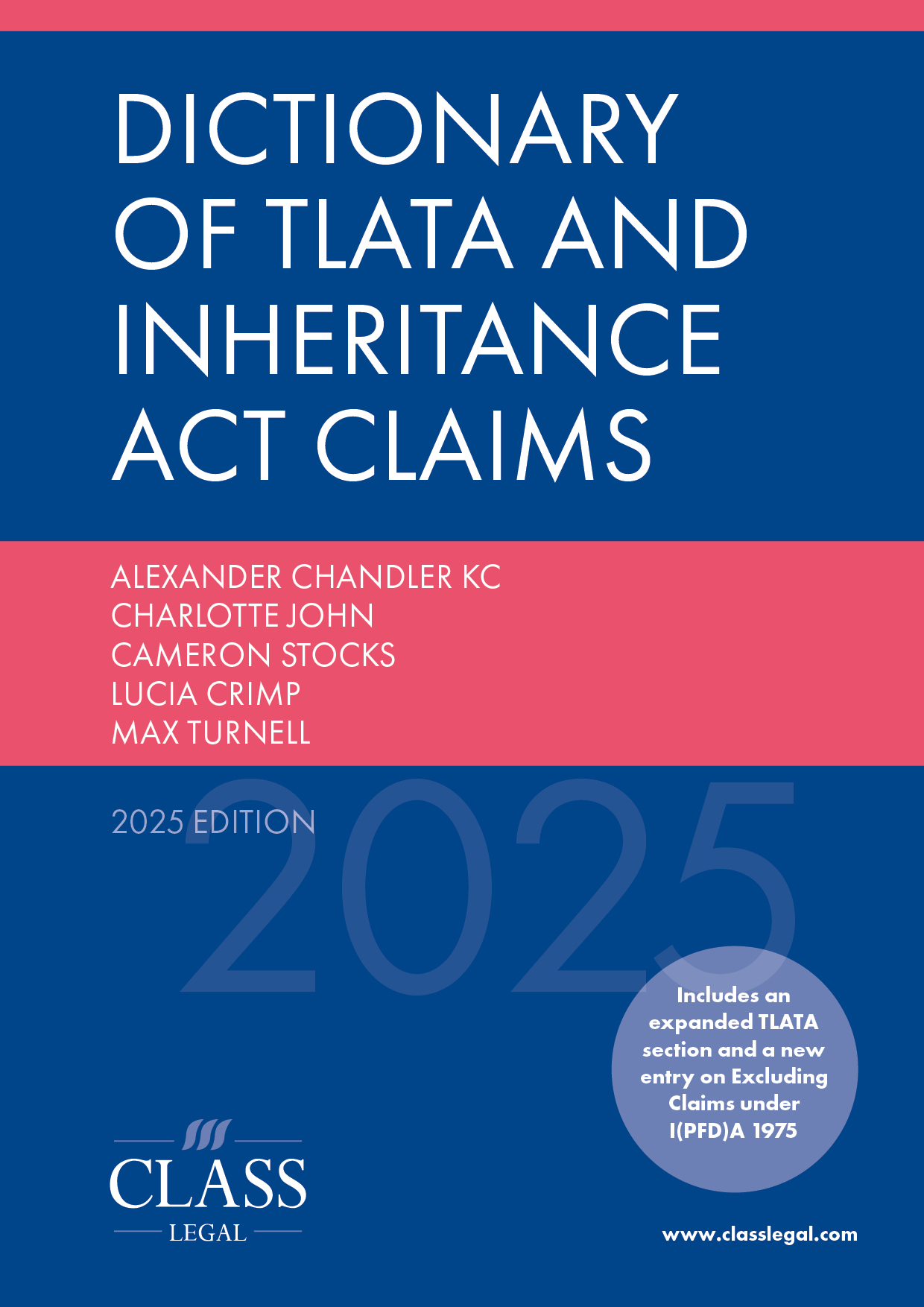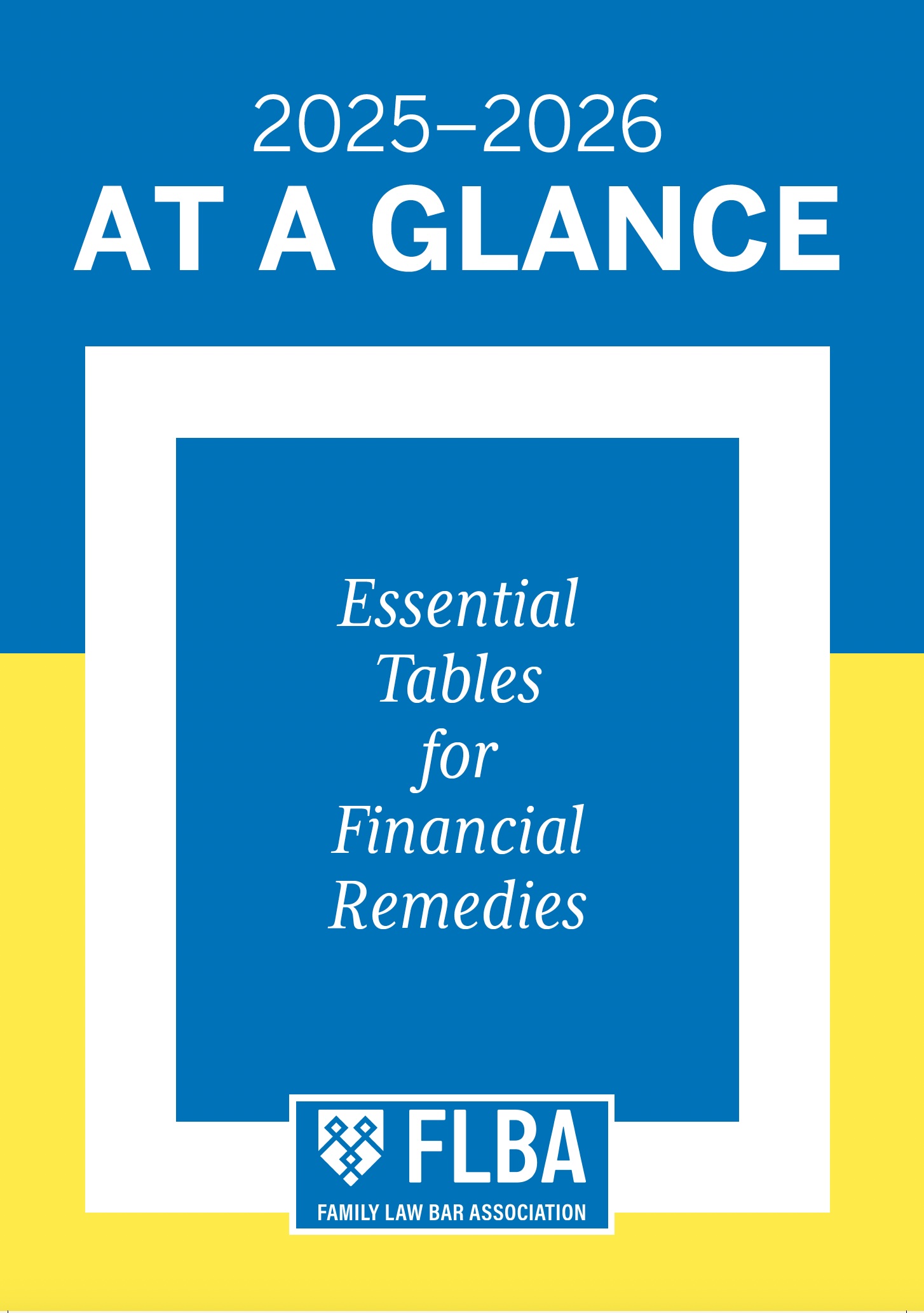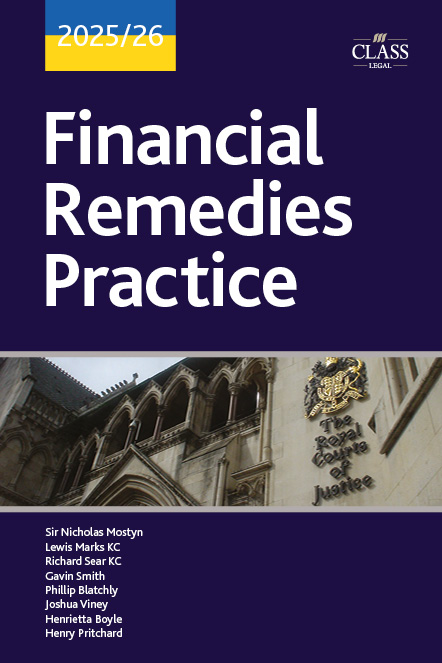
Vince v Vince: Every Cloud Has a Green Lining
Published: 26/03/2025 07:00

Disclaimer: Amelia Alston and Laura Couves represented (with Sarah Jane Lenihan and Simon Bruce of Dawson Cornwell LLP and Richard Todd KC and Lily Mottahedan of 1 Hare Court Chambers) the wife in Vince v Vince [2024] EWFC 389 (Fam).
On Friday, 17 January 2024, Mr Justice Cusworth handed down the judgment of Vince v Vince [2024] EWFC 389 (Fam), which addresses a number of pertinent issues concerning business valuations, arguments over the duration of the marital partnership and whether pre- or post-marital endeavour warrants a departure from the sharing principle.
This article aims to summarise the main points and issues raised by both parties, together with some helpful guidance provided by Cusworth J.
Background
The wife, a homemaker, is 50 years old and lives in Stroud with the parties’ son and the husband’s son from a previous marriage. The husband, an eco-entrepreneur, is 63 years old and known for being outspoken in the green sphere having been an influence in the development of wind turbines.
He is the sole shareholder of Green Britain Group Limited, which has two main subsidiaries (Ecotricity Group Limited and Ecotricity New Ventures Limited). The parties met in 1999 and separated in 2022. Cusworth J found the duration of the marriage to be 22 years, from February 2000 until February 2022.
In open offers exchanged in advance of the trial, the wife sought 50% of all matrimonial assets and the husband sought to give her just 40%.
Marital relationship
The wife argued that the relationship began in mid/late 1999 and there was ‘intermittent cohabitation’ by the end of that year, with ‘formal cohabitation’ commencing in January/February 2000; [5]. The husband argued that the relationship started at the end of 1999, but accepted they were cohabiting by February 2000. Cusworth J found that a relationship must have a ‘significant feeling of permanence’; [7]. Indicators of that include a shared desire for a long term and committed relationship and full-time cohabitation. He concluded the appropriate commencement of the marital relationship to be in February 2000 by which time ‘the mutuality of commitment between them was present’; [7].
Turning to dates of separation, the husband’s case was that he ‘told the wife that he no longer loved her and believed that the relationship had broken down’ at some point in late March 2021 thereby confirming the parties’ separation; [8]. However, Cusworth J made clear that, ‘Many couples live effectively apart under the same roof for many years before eventually separating’; it is not necessarily enough for one party to inform the other that they are no longer in love, or simply decided in their own mind that the relationship has ended; [8]. He did not consider it fair to take the husband’s date of separation, which was nearly a year before he moved out and physical intimacy stopped.
Each case is entirely fact specific, but importantly, Cusworth J highlights the distinction between the start and end of a marital partnership. At the start, ‘both have to want it and to commit to it’ whereas at the end, ‘one partner may unilaterally decide that the relationship is over … [but] the clock will very possibly continue to tick until they end that physical cohabitation’ and the relationship has no way of recovering; [9].
Valuations: single and joint experts
The parties jointly instructed PwC to value the husband’s business assets, whilst the wife instructed RDA as her shadow expert and the husband instructed FTI as his. It is a fortunate aspect of this case that the parties had the financial resources to appoint individual experts.
PwC valued the assets at £153.5m, RDA at £165.8m and FTI at £148.4m.
The experts were largely able to agree matters between them in a joint statement on the first day of the trial, which was commended by Cusworth J, and, in doing so, their respective valuations were all narrowed within the same bandwidth.
Although a few differences remained between them, this provided a ‘greater measure of certainty’, and Cusworth J adopted PwC’s figure as the SJE; [18]. He recognised that valuing businesses of this nature will always be inherently fragile and uncertain, particularly in cases of substantial monetary value.
Endeavour: pre-marital and post-separation
Having determined the length of marriage, Cusworth J turned to what value should be ascribed to the husband’s pre- and post-marital endeavour in the business.
The wife believed there was no material value for the pre-marital endeavour and therefore sought to argue that there should be no departure from equality, whilst the husband argued that the starting point should be a discount of 50% of the established business value on account of this endeavour.
As part of the wife’s claim, she argued that the PwC valuation of the business as at April 2000 of £1.1m was de minimis so there was no real value from the outset of the relationship. This was rejected by Cusworth J – the value in itself is not a reason to disregard nor ignore the husband’s pre-marital effort. However, he also said that if he found in the husband’s favour in relation to his contention of significant pre-marital endeavour, then it would be ‘very unfair’ for the wife, particularly with such a long marriage of 22 years; [36].
He acknowledged that each party made ‘an equal and matched contribution to the welfare of the family’ during the marital relationship, which should be shared equally, but when it comes to post-separation, he accepted that the husband ‘played some part in the businesses’ growth’; [29]. Although Cusworth J could not deny the involvement of other ‘major external factors’ post-separation, he was satisfied that these c.2.5 years should be added to the pre-marital years to reflect the husband’s ‘unmatched contributions’; [29].
We have not heard the last of the philosophy of unmatched contributions and discrimination between the roles of breadwinner and homemaker.
The pre-marital period of endeavour was therefore considered by Cusworth J to be from 1995 to February 2000 (the point of incorporation of the main corporate entities which were dependent upon the husband’s particular vision), and the period of post-separation endeavour was considered to be February 2022 up to the date of the trial in December 2024.
Cusworth J calculated that there had been some 356 months between 1995 and the date of the trial, and of this period, the matrimonial partnership was 22 years, or 264 months, which is 74.16% of the period during which the value of the business was being acquired. And the matrimonial wealth therefore included 74.16% of the current value of the business. Cusworth J was satisfied that this would be fair to both parties and reflected the husband’s pre- and post-marital endeavour.
Discounts
The next issue to be dealt with was whether the husband should be able to claim any discounts from the wife’s share for realisation costs, illiquidity or uncertainty.
This case benefitted from a ‘relatively firm’ valuation of the business assets due to the experts’ similar figures, and although the husband tried to sell the business before the marriage breakdown, Cusworth J was not satisfied that the costs of extracting the wife’s lump sum should be ignored; [42].
He accepted that it was unreasonable for the husband to be solely responsible for the extraction costs by way of a dividend payment and therefore deducted the net cost from the overall value.
The husband sought a further reduction of 10% to the wife’s share (from 50% down to 40%) on account of illiquidity and risk. He relied on Peel J’s discount guidelines in the case of HO v TL [2023] EWFC 215. The wife claimed no discount is necessary and Cusworth J found in the wife’s favour. No further 10% discount was given in circumstances where it was the husband’s choice to retain the business and, in doing so, had signed himself up to taking on the illiquidity and risk, and to pay the wife a lump sum over a period of three years. He held that the wife should receive no less than her 50% of the marital element of the business.
Held
Cusworth J found the total assets to be £120.2m (less implementation costs of £9.3m). This comprised (1) £29.15m of non-matrimonial assets to be retained by the husband, and (2) £91.2m of matrimonial assets to be divided equally.
The wife was awarded a total of £45.64m, 50.04% of the matrimonial assets accrued during the 22-year partnership and 37.9% of the total assets.
A departure from equality was made in the husband’s favour to reflect the c.7.5 years of pre- and post-marital endeavour.
Of this £45.64m, the wife will receive £43.51m payable in three tranches of £13.94m, £14.49m and £15.08m. Note that the husband’s open offer for the trial was for £22.25m only. This was the only offer from the husband available at the date of the hearing once the value of the business was known.
This judgment helps family lawyers recognise the importance and implementation of the sharing principle in big money cases and how, when it comes to pre- and post-marital endeavour, it is for the court’s discretion to determine any departure from equality, bearing in mind all the factors set out in s 25(2) of the Matrimonial Causes Act 1973.
Helpfully for the general public, the judge in his separate transparency judgment (Vince v Vince [2024] EWFC 406) has ensured that the most perspicacious possible of analysis can be given to the proceedings.










